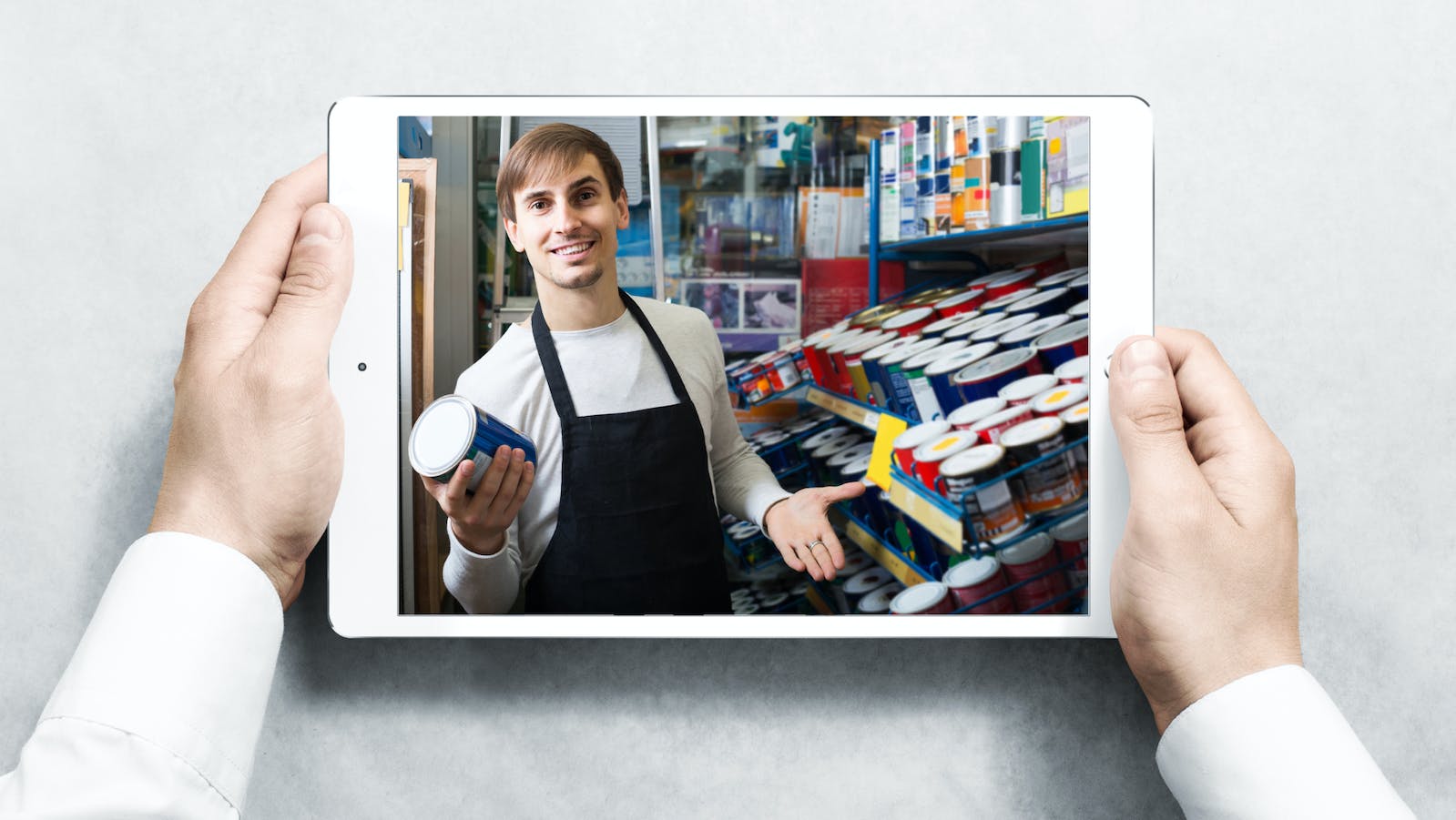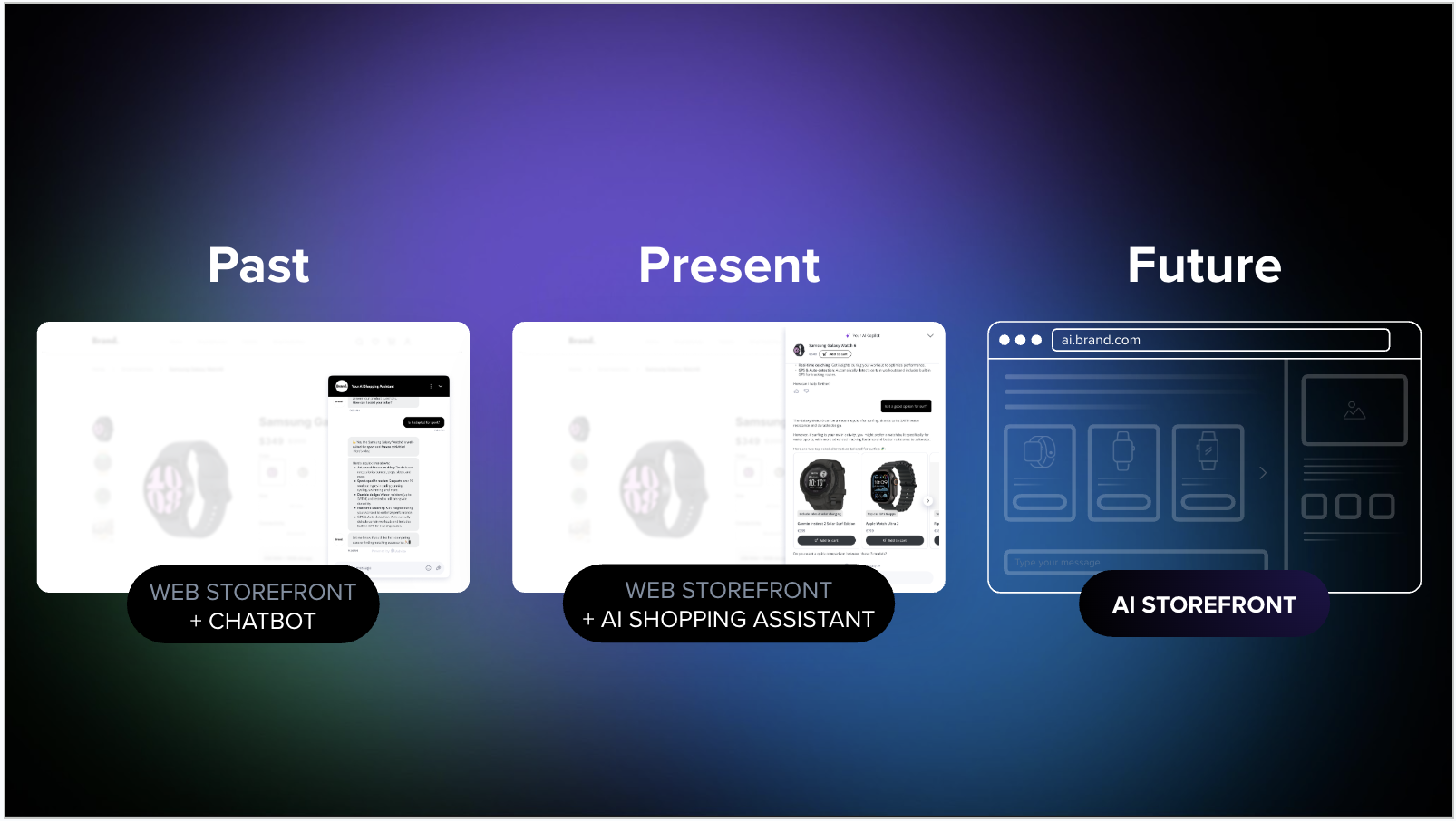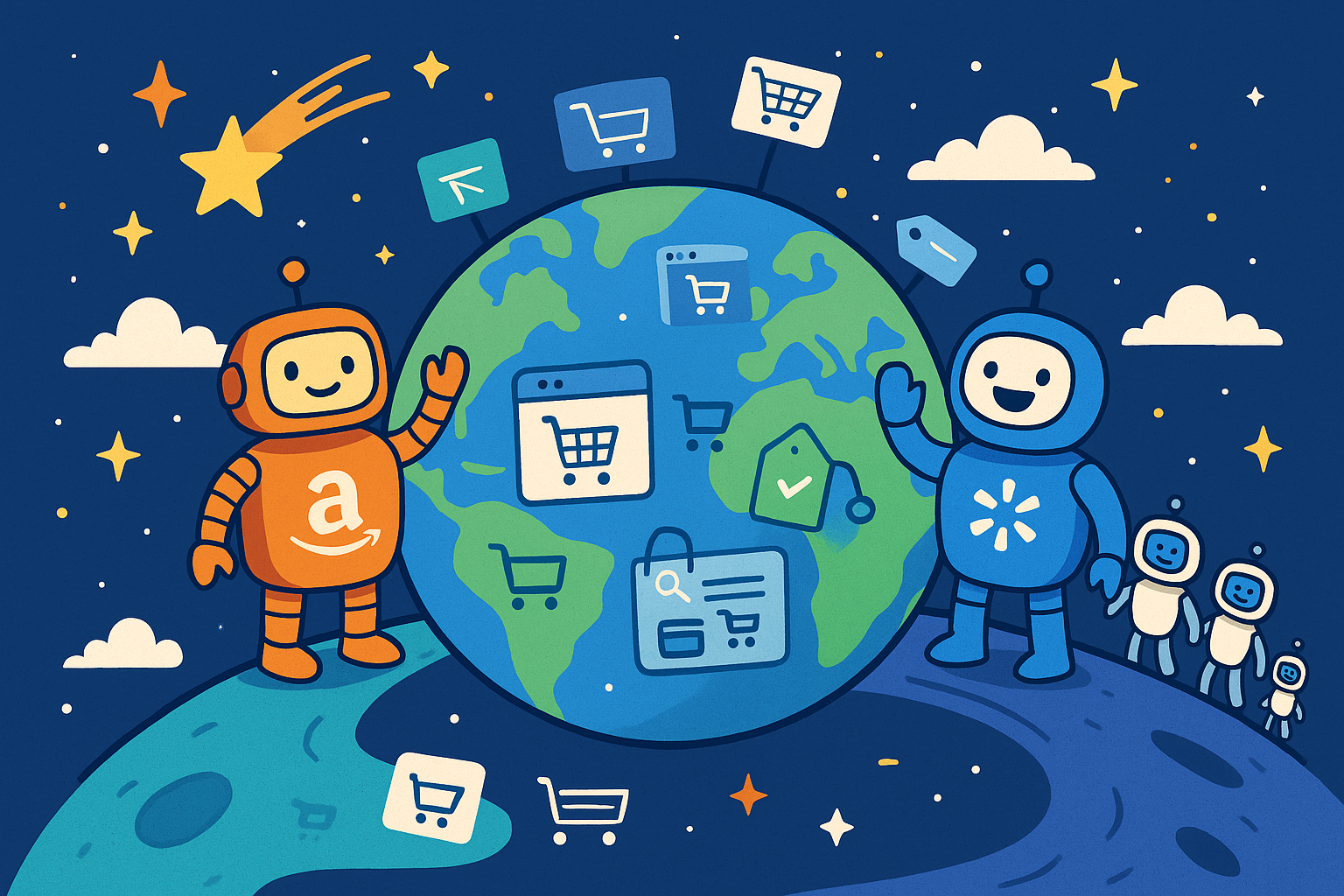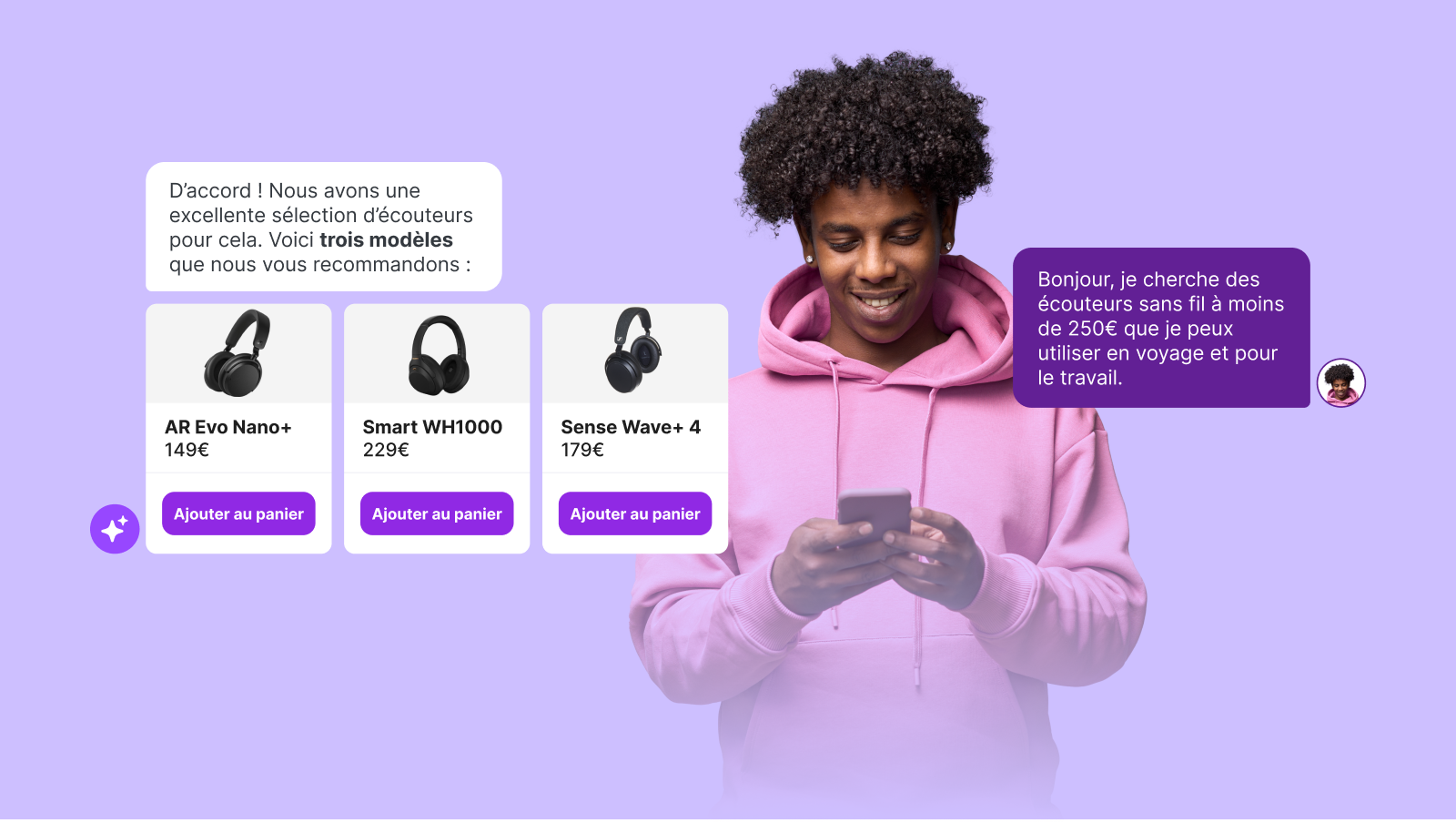Mastering Omnichannel E-commerce: Strategies for Success
iAdvize

Who could have predicted the shock wave that swept through the retail world in recent years? With the explosion of click-and-collect, online shopping, and e-commerce business as a result of rapid digitalization from the COVID-19 pandemic, the retail landscape has been irrevocably changed.
On both sides of the Atlantic, online revenue saw unprecedented growth. In fact, the penetration rate of e-commerce in the United States went through the equivalent of 10 years of growth in 3 months.
This acceleration of digital use begs the question: What's the future of physical commerce? Forrester predicts that due to the pandemic, off-line sales will see a 20% growth contraction in 2020, while online sales will remain stable.
Despite this, physical stores remain attractive for the majority of consumers seeking direct contact with the product, human interaction, or the enjoyment of shopping. Rapid digitalization just makes digital touchpoints now an essential part of the buyer journey.
76% of consumers worldwide prefer to buy from retailers who offer a seamless multichannel ecommerce experience.
According to McKinsey, digital-first and omnichannel retail has pivoted more easily, and retailers that prioritized physical stores and face-to-face engagement over omnichannel strategies have struggled.
Today's customers’ shopping habits are constantly changing. They expect instant service and around-the-clock support that has an advanced level of personalization and accuracy.
For many businesses, the way they've gotten through the pandemic was to offer their customers the experiences they expect: frictionless, tailored shopping journeys, where the divide between physical and digital dissolves. This is the definition of an omnichannel strategy.
Fnac-Darty implemented omnichannel commerce tactics and was able to increase their online sales from 20% to 30%. Any ecommerce business can benefit and create a competitive edge by focusing on improving their digital channels.
Turn Brick-and-Mortar Stores Into E-commerce Distribution Hubs
Consumer research has revealed that nearly half of customers don't plan to return to in-store shopping for a long time, and potentially not ever. When shopping in-store, shoppers expect a consistent and efficient experience. More and more often, they use the internet to prepare their visits.
Factors that influence the decision to purchase online generally come down to weighing product price and delivery terms. Brands that have incorporated their network of store territorial coverage into their delivery schemes, via a drive through service or shipping from the store, are doing well.
This strategy was implemented by Leroy Merlin to handle online orders during and after the lockdown. The brand processes and ships orders from the store, which is now an e-commerce warehouse, for home delivery within 24 hours. This reduces delivery times, helps with cost control, and simplifies the process.
By implemented the omnichannel strategy of using their sales team to assist online site visitors over messaging, brands are able to then organize in-store visits and pick ups, and enhance their overall omnichannel experience. 54% of users who visit the Leroy Merlin website have the intention to make a purchase in store. The e-commerce site then becomes a lever to encourage buyers to find their way back to the brands.
Re-deploy Sales Teams to Your Online Store
In times of crisis, offering quality customer service is more crucial than ever to acquire and retain new buyers.
At the end of the 2008 crisis, companies committed to enhancing their customer experience performed three times as well as those who didn't. Additionally, 3 out of 5 customers say they would give up on their favorite brand after a poor customer service interaction, and this happens to be the third most important criteria for ensuring brand loyalty, after price and product quality.

To ensure continuity of service despite the influx of online requests at the height of the pandemic, many brands turned to the omnichannel strategy of messaging: a scalable, accessible solution for employees working remotely that generates greater customer satisfaction. In fact, the iAdvize conversational commerce platform saw an 82% increase in online conversations between February and June 2020, in the consumer products industry.
Brands that have managed the highest level of availability did so by merging their physical and digital retail strategy and deploying innovative omnichannel communication touchpoints. One example of this was from a leading European sporting goods retailer, who re-deployed 400 of their sales staff to online messaging, when faced with decreasing in-store traffic. These skilled sales professionals were highly specialized in pre-sales, and were able to increase the average e-commerce basket after a conversation by 61%.
Among our clients, several brands have connected their in-store salespeople to their e-commerce websites. For example, a major household appliance brand implemented a sophisticated conversational strategy to optimize their online sales. The brand deployed a mix of chatbots, independent community experts and professional in-store salespeople to answer online visitors' questions in real time. This approach allows them to optimize the occupancy rates of sales teams, while boosting sales. Some salespeople achieved post-chat conversion rates of over 20%.
Streamline Your E-commerce Transition With Video Tools
The use of videoconferencing has increased tenfold within companies in 2020, a shift that has extended into the private sphere. The popularization of these communication channels has afforded brands the opportunity to get closer to their customers using video chat, which has become part of their daily lives.
This digital experience makes it possible to offer a personalized contact and to win over customers who are less comfortable online. This is another step towards recreating the physical experience in the digital world, and towards the merging of shopping experiences.
Video chat simplifies online journeys in a variety of situations:
- Several cosmetic brands now use video chat for customer service agents to guide customers through skincare and makeup routines best suited to their skin type, in a way that mimics the salon experience.
- In the DIY sector, video call makes it possible to offer tangible repair advice, and present the products the consumer might need.
- In the auto, tech, household appliances, and telecom industries, product demonstrations over video are a helpful conversion driver. Several iAdvize clients in the auto sector currently use video chat to highlight specific vehicle features, draw visitors to a dealership, and finalize their purchase online.
- French moving services leader, Demeco, adopted online video consulting for remote quotes.
Leverage Multichannel Ecommerce Strategies to Maximize Performance
The uncertainty associated with the pandemic is likely to remain, and the evolution of physical retail may depend on the various health alerts and measures in place at any given time.
With this in mind, brands must capitalize on their e-commerce performance to capture all of their digital revenue opportunities by offering 24/7 purchasing assistance through live chat tools powered by generative AI.
As an omnichannel touchpoint, messaging supports brands’ digital performance at all stages of the customer journey, from engagement to conversion and loyalty.

Online shoppers aren’t the only ones who sometimes feel alone in their choices. Who hasn't had the experience of trying to talk to a salesperson in-store but couldn't find one available?
Thanks to a simple system of QR "help" codes positioned throughout the physical retail store, it's now possible to connect customers onsite with a brand advocate by video call, voice, or live chat.
The trend of merging physical and digital shopping channels as made messaging the solution to many of the business challenges a company might face.
Learn more about the benefits of integrating omnichannel solutions powered by generative AI technology.

.png)
.png)





